While Botswana has relatively few museums, those that have been set up offer a fascinating glimpse into the country’s culture and heritage. The National Museum and Art Gallery situated in Gaborone is by far the largest and most important. However, from the 1980s onwards, various traditional museums have sprung up in Botswana’s smaller towns and cities.
The National Museum perhaps being the most easily accessible, remains the most popular. However, all the other ones listed in this article have gradually started to gain popularity in recent years too.
There are currently 12 museums across the country, covering different aspects of Botswana’s heritage and culture, varying from Philately to Diamond Mining, but with a strong focus on cultural heritage and tradition.
1. The National Museum and Art Gallery – Gaborone
Established in 1967, Botswana’s National Museum and Art Gallery is home to a collection of wildlife exhibits as well as crafts and paintings by local artist going as far back as the 1960s. This purpose-built gallery also hosts a number of exhibitions, many of which are aimed at showcasing the work of local artists as well as to revive interest in Botswana’s cultural heritage. In the courtyard outside is used to display a collection of transport-related exhibits including a steam locomotive. The museum became part of the government in 1976.
The museum, which hosts various annual exhibitions throughout the year, has the following divisions:
- Archaeology
- Natural History
- Ethnology and Ethnography
- Education
- Art
Address: 331 Independence Avenue, Gaborone
Tel: +267 374 616
Opening hours: Tuesday to Friday – 09:00 to 18:00
2. Botswana Post Philatelic Museum – Gaborone
Set up in 1999, the Botswana Post Philatelic Museum sits on the ground floor of the Botswana Post Head Office in the Main Mall. A stamp collector’s dream, the museum houses multiple 2-way glass display cases full of stamps dating back to 1886.
Address: Plot 539552, Khama Crescent, Gaborone
Tel No: +267 3953131
Opening hours: Monday – Friday 0800 to 1700, Saturday 0800 to 1200
3. Kgosi Sechele I Museum – Molepolole
Situated in the former colonial police station and houses of residence built in 1902, the Kgosi Sechele Museum depicts the history of the Bakwena people. It features displays of traditional houses as well as paintings and photos of the local area and people.
Highlights include memorabilia relating to the famous explorer David Livingstone (1813 to 1873). The museum offers an arts and crafts programme, educational programmes for school children and guided tours of Molepolole village and cultural sites of the area.
Close to the museum grows the old Bechuanaland Postal Tree, where people would drop off their post to be collected in bags by ‘postal runners’ who would complete up to 50 Km a day to make the deliveries.
Address: Main Road, Molepolole
Tel: +267 592 0917
Opening hours: Tuesday to Friday 09:00 – 12:00 / 14:00 – 16:00 and Saturday 11:00 – 16:00
4. Samora Machel Museum – Lobatse
A joint venture between the Botswana and Mozambique governments, the museum opened in 2016, symbolising the value of freedom and independence of nations. President Machel was Mozambique’s president from 1975 to 1996 and a liberation fighter when he died in a plane crash in 1986. In the early 1960’s Machel met Motswana, John Kgaboesele in Peleng, Lobatse. Together the two collaborated in the liberation of Mozambique. In 2009, the Mozambique government bought the house in which Kgaboesele housed Machel and his family to transform it into the museum.
5. Phuthadikobo Museum – Mochudi
Phuthadikobo literally means ‘gather up your blankets. The brainchild of Sandy Grant, a former teacher at Molefi Secondary School, Phuthadikobo Museum is situated within a building that dates as far back as the 1920s and was originally the Mochudi National School.
Grant together with Kgosi Linchwe II and Bakgatla brought the museum to life. It was transformed into a museum in the 1970s, making it the oldest of Botswana’s district museums.
The museum is home to an interesting array of local crafts, together with a collection of photographs (some going as far back as the end of the 19thCentury) depicting the lives of the Bakgatla people taken by the likes of Professor Isaac Schapera, Duggan Cronin and Sandy Grant. A screen printing workshop is based on the site, producing silk-screened goods that are sold in the onsite shop. There are also old woven baskets, tapestry from Oodi Weavers, art, old agricultural equipment and Botswana’s first petrol pumps taken from the Dennis Service Station in Serowe.
Address: Phuthadikobo Hill, Mochudi
Tel: +267 577 7238
Opening hours: Monday to Friday – 08:00 to 17:00
6. The Diamond Museum – Orapa
Botswana’s first diamond museum, the Adrian Gale Diamond Museum in Orapa was named after the former Debswana GM, the late Dr. Adrian Gale, who sought to diversify the economic base of the Boteti region from mining. The museum explains mining processes and displays mining products.
It also showcases the story of the discovery of diamonds in Botswana in 1967. The museum uses modern museum exhibition methods to create the right ambience for the presentation, which follows six key thematic areas- the introduction, formation of the earth and Geology, Diamond prospecting and Exploration, Diamonds mining, Diamond Ore processing and the processing of diamonds.
There is a curio shop; a coffee shop; storage area, visitors’ lounge as well as indoor and outdoor display areas. The Department of National Museum and Monuments contributed significantly to the development of the museum for the high volume of tourists transiting to the Makgadikgadi.
7. KhamaIII Memorial Museum – Serowe
Like many of Botswana’s museums, the Khama Museum opened in the 1980s with the aim of promoting cultural awareness in the area. Located at the base of the Thataganyana Hill, the museum first opened its doors on 19thOctober 1985.
The main building houses exhibitions, which cover the history of the Bangwato and their leaders, including Khama III. Other attractions here include the Bessie Head collection. There are a number of exhibits devoted to the acclaimed writer, such as an authentic replica of the room in which she wrote her stories, which have over the years drawn great interest from researchers the world over.
Born to a rich South African white mother and a black father, Bessie sought refuge in Botswana after getting involved in Pan African politics in neighbouring South Africa.
The Khama Museum is housed in two buildings, one of which is known as the Red House because of its red roof, built around 1910. It exhibits African insects and snakes, Botswana national symbols and art. Additionally, also on display are the San’s way of life and culture as well as a collection of furniture, uniforms, correspondence and photographs that chronicle the legacy of the Khama family and the history of Serowe.
Tel: +267 463 0519
Opening hours: Tuesday to Friday – 08:00 to 16:30
8. Tsodilo Hills Museum
Tsodilo Hills is an Early Iron age site that dates as far back as 700-900 AD and is home to over 4 000 rock art images at 400 sites, in an area that spreads over approx. 10 sq km. The area was declared a UNESCO World Heritage Site in 2001.
The small museum sits at the entrance to the main Rhino Campsite. It displays archaeological finds including pottery, metal spearheads, stone tools, glass beads unearthed at the site. The museum opened in 2001.
9. Nhabe Museum– Maun
Located in Maun in northwest Botswana, Nhabe Museum opened in 1995 and is located in a historic building, which was built by the British military in 1939.
The building was used during World War II as a surveillance post from which the colonialists kept a watch on German Namibia. Years later, it became the Head Quarters for Safari South, one of the very first safari companies to operate in the Okavango Delta in North West Botswana.
Nhabe Museum is a great place to visit if you want to find out more about the history and culture of the Okavango region. Its collection comprises everything from wildlife exhibits to traditional craftwork and examples of fine art to photography.
Housed within the same grounds is also a small crafts shop that sells candles, paintings and crafts made by locals. Kana Jang restaurant, which serves local cuisine with a modern twist, also opened in 2016. The Okavango Artists Association and the PoetKavango Group are currently based at the museum, which also works closely with the Ngamiland basket weavers and crafts producers, a true testament to the partnership between the museum and the local artists.
Address: Sir Seretse Khama Road, Maun
Tel: +267 686 1346
Opening hours: Monday to Friday – 10:00 to 17:00
10. SupaNgwaoMuseum – Francistown
Housed in the 100-year-old Government Camp, the Supa-Ngwao Museum includes a prison and a police canteen and has moderately interesting small displays about local and regional culture and history (supa-ngwao means ‘to show culture’ in Setswana). The museum also hosts temporary art exhibitions and occasional special events. The museum was registered in 1986 but only started operating in 1992.
Francistown’s only museum, Supa Ngwao features a varied array of exhibits which depict the heritage of local people and the town itself. As well as pictures and traditional craftwork, the collection also includes farming equipment and musical instruments. The museum also has a Craft shop, which supports about 200 locals. Visitors can purchase locally made craft items.
Address: Government Camp, Francistown
Tel No: +267 240 3088
Opening hours: Monday – Friday 08:00 to 13:00 / 14:00 to 17:00, Saturday – 09:00 to 17:30
11. D’kar’s Kuru Museum & Cultural Centre – Ghanzi
Situated in the village of D’Kar in the Ghanzi district, the Kuru Museum and Cultural Centre is a place where locals and other Basarwa from neighbouring settlements come together to share and strengthen their traditions and culture. The museum has a beautiful permanent exhibition on Basarwa culture.
Apart from its Annual Dance Festival, the centre organises traditional knowledge workshops for local primary school children. Lessons in playing traditional musical instruments are also taught at the workshops. These lessons are meant to keep the fire of culture burning.
Built both to inform visitors and to promote local culture within the community, the cultural centre focuses on traditional dance and music. It houses beautiful displays of hunting attributes, veldt foods, clothes, musical instruments ornaments and crafts. There are also items for sale at the craft shop, a youth programme and audio-visual centre with films and music about san traditions which stretch over 20 000 years.
Popular with tourists, the museum also displays unique art produced by the San, which is known the world over.
Address: D’Kar, Botswana
Opening hours: Monday – Friday 10:00 to 16:00, Saturday 11:00 to 15:00
12. Kgosi Bathoen II Memorial Museum – Kanye
Opened in 1988 and housed in the old district Commissioners offices next to Kgosi Bathoen’s residence in Kanye, the building was also used as a clinic at a later date. Kgosi Bathoen II started a museum in Kanye in the early 1960s, using the old London Missionary Society building. Unfortunately, only a few subscribed to the idea of the conservation of heritage and historical monuments and the museum closed for a time due to lack of funds.
The museum can arrange guided tours to local heritage sites, including the old cemetery, the Kgotla buildings, Mmakgodumo Dam, the grain silos and the King George V Memorial Hall.
The old Kanye prison, also a protected monument, is located just a stone’s throw away from the museum. The museum has geology, mining section, a cultural part and a history of the Kgosi of the Bangwaketse.
Sources: http: world-guides.com, Michael C. Brook’s book Botswana Monuments, Heritage sites and Museums
Images by Gary Ashworth



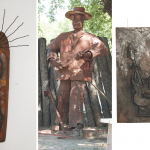
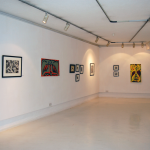

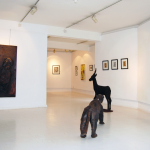

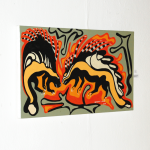
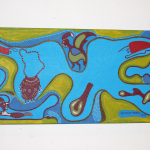
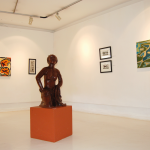
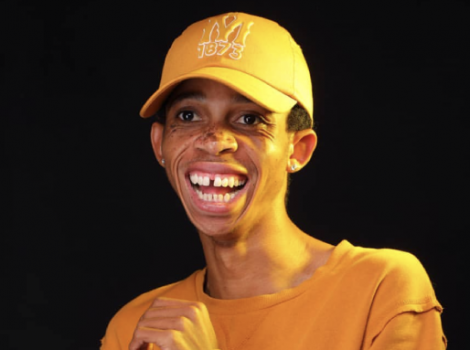


I’m impressed, I must say. I hardly ever encounter a blog that’s both educative and entertaining. I am very happy I stumbled across this website, I didn’t know much about Botswana, but now I feel I know more about Botswana than I do my own country.